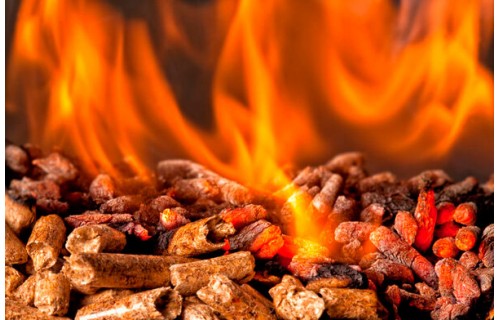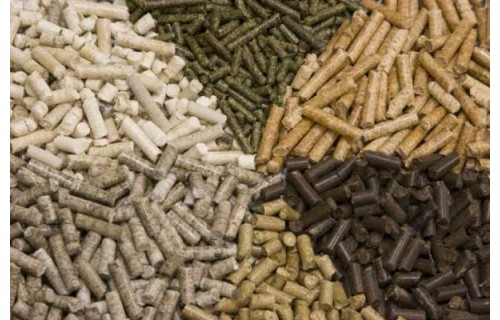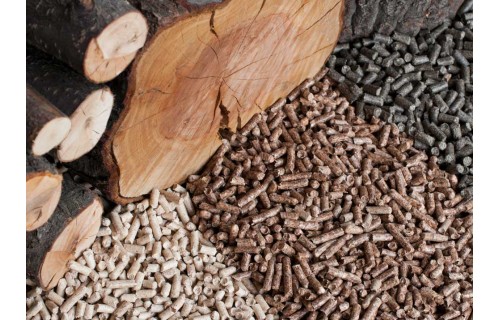Sind Pellets ein guter Brennstoff?

Ab 2024 wird bei der Modernisierung der Heizung der Anteil der Energie zur Heizung von Gebäuden verwendet, und von erneuerbaren Quellen wird erwartet, dass sie mindestens 65% ausmachen. Aufgrund der jüngsten Turbulenzen auf dem Markt, der gestiegenen Preise für fossile Brennstoffe und der Unsicherheit hinsichtlich ihrer Verfügbarkeit stellt sich die Frage, welche Art von Heizung praktisch und wirtschaftlich ist.
Angesichts der Tatsache, dass Holz in ganz Europa als nachwachsender Brennstoff angesehen wird, scheint die Wahl einer Heizung mit einem Pelletkessel eine gute Entscheidung zu sein. Die folgenden Argumente sprechen dafür:
- pellets sind ein umweltfreundlicher Brennstoff mit geringen Staubemissionen,
und sein CO2-Gleichgewicht kann als völlig neutral angesehen werden, da bei seiner Verbrennung nur so viel CO2 entsteht, wie der Baum im Laufe seines Lebens aus der Atmosphäre extrahiert
- wird nach dem Abwischen aus Holzabfällen gebildet
und Sägewerke.
- ist ein unabhängiger Brennstoff und unterliegt nicht den für fossile Brennstoffe typischen Bedingungen wie Importbeschränkungen.
- mit Ausnahme der sogenannten "höheren Gewalt" wird die Verfügbarkeit von Pellets durch zahlreiche Hersteller, einschließlich regionaler, garantiert, die in Pellets investieren
mit geringer bis mittlerer Leistung kommen sie den umliegenden Verbrauchern entgegen. Seine Verfügbarkeit ist nahezu unbegrenzt.
- kann eine kostengünstige Alternative zu Kohle, Gas und Öl sein.
Lassen Sie uns den letzten Aspekt betrachten. Vorausgesetzt, dass in der Heizperiode (6 m) die Temperatur
in Räumen bei 21 ° C benötigen wir zum Heizen eines gut isolierten Hauses mit einer Fläche von 150m2 und einem Kessel der Klasse 5 (Wirkungsgrad 90%) ca. 4500 kg Pellets.
Für einen Kohlekessel der nächsten Generation benötigen wir ca. 4000 kg Ökostrom. Vorausgesetzt, der Preis für 1 Tonne Ökoschrott beträgt derzeit ca. 2000 pln. 1800 ZŁ erhalten wir für die Pelletheizung einen Preis von 8100 ZŁ und für die Kohleheizung von ca. 8000 ZŁ. Der Unterschied scheint gering zu sein, aber es sollte daran erinnert werden, dass die Kohlepreise aufgrund der schädlichen Auswirkungen auf die Umwelt in den kommenden Jahren steigen könnten. Darüber hinaus müssen wir uns daran erinnern, dass das nationale Luftschutzprogramm ab 2030 nicht die Verwendung von Kohle als Brennstoff für die Heizung in der Stadt vorsieht, sondern ab 2040 in ländlichen Gebieten. Ein großer Vorteil von Pellets ist seine Sauberkeit im Gebrauch - es wird einfach nicht schmutzig. Von 1 Tonne verbrannter Pellets bleiben nicht mehr als 5 kg Asche übrig, während
für die Kohle vom Typ Ecogulver ist dies mindestens 40 kg, für die Walnuss sind es 70 bis 120 kg.
In Ländern wie Deutschland und Österreich ist die Preislücke zwischen den Energieträgern größer als in Polen. Die Produktionskosten von 1 kWh aus Pellets sind etwa 30% niedriger als bei Erdgas und Heizöl. Hinzu kommen staatliche Förderprogramme. Es kann nicht ausgeschlossen werden, dass solche Preisunterschiede in absehbarer Zeit auch in Polen auftreten werden.
Zusammenfassung
In Polen werden jährlich ca. 40 Millionen m3 Holz reduziert. Dies entspricht 40 Millionen Bäumen, und diese Menge macht ungefähr 75% des jährlichen Wachstums aus, was bedeutet, dass Bäume jedes Jahr mehr CO2 als verbrannte Pellets aufnehmen und Holz es freisetzt.
Die Zukunft von Pellets ist nicht in Gefahr. Die größten Pelletproduzenten in Europa, darunter Deutschland, Frankreich, Italien, Dänemark und Österreich, bauen ihre Produktionskapazitäten aus und bauen neue Fabriken. In Österreich
in den nächsten 3-4 Jahren ist geplant, 11 zusätzliche Pelletfabriken zu bauen. Dann wird die Produktionskapazität dieser 51 Standorte erlauben, 2,2 Millionen Tonnen Pellets zu produzieren. Das sind 30% mehr als im Jahr 2022.
In Polen werden im Jahr 2021 ca. 1,1 Millionen Tonnen Pellets produziert, das ist eine Zunahme von ca. 50%
relativ zum Jahr 2015. Es gibt noch keine Daten für 2022, aber man kann das größte% -Wachstum in den letzten Jahren erwarten, das 30% erreicht.
Pellets haben ein sehr großes Entwicklungspotenzial im Bereich der industriellen Nutzung,
und die politischen Ziele der EU-Kommission zwingen dazu, alte Kohlekessel durch pelletbetriebene Heizsysteme zu ersetzen.






